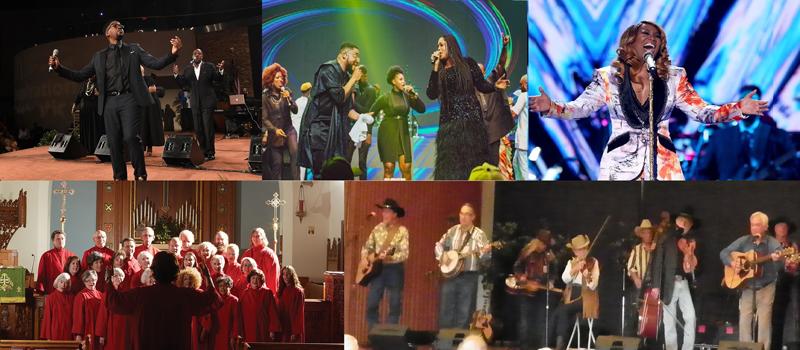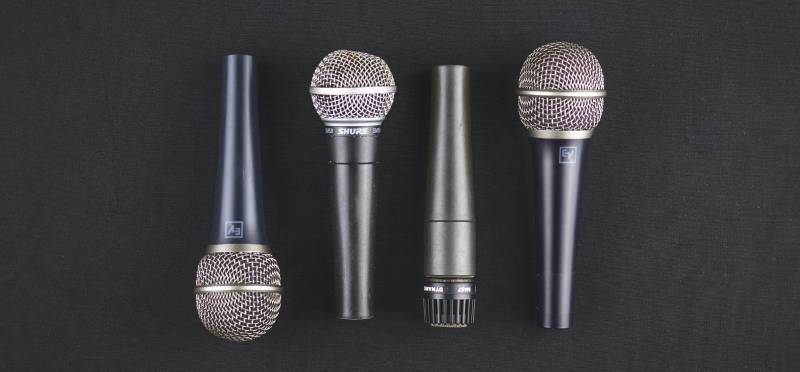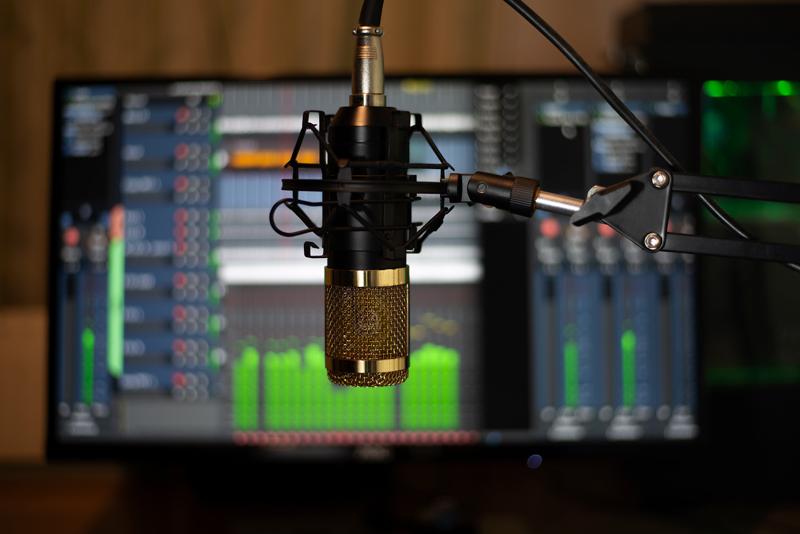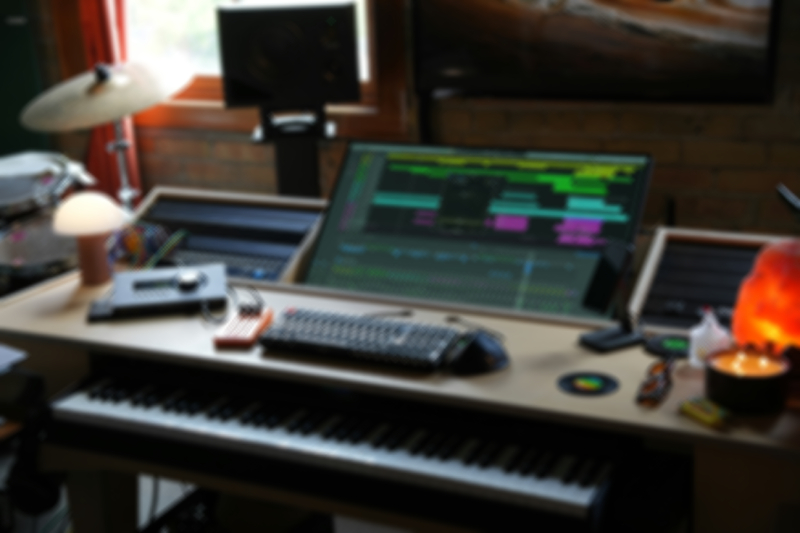If your task is to mix a gospel song, first of all, you may be overwhelmed by the amount of material you have to combine into one track. The choir, several lead vocals, powerful drums, and a great number of instruments comprise the accompaniment.
In this article, we’ll tell you how to mix this kind of song and how we approach mixing gospel music in our studio.
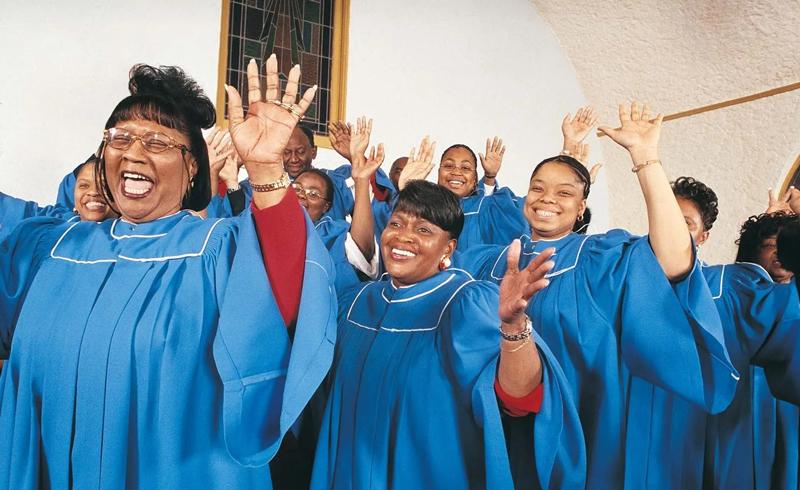 What genre is gospel music?
What genre is gospel music?
Even though gospel music is considered to be a separate genre, many people find it hard to determine the exact place it takes among music genres and styles.
Having originated from classical Christian hymns that appeared in Europe somewhere in the 16th–17th century or earlier, gospel music as we know it developed greatly throughout the 20th century in America. It has involved the genres of country music, jazz, rhythm and blues, rock and roll, and others.
In the multitude of different kinds of gospel music styles, a huge part plays southern gospel with the subgenres of country gospel and bluegrass gospel, which lead us through different country music styles.
At the same time, the black gospel subgenre used the motives of African music and developed in genres like rhythm and blues, jazz, rock and roll, and soul.
Deriving primarily from black gospel, the contemporary gospel subgenre, among other styles, actively involves hip-hop and pop.
Today it’s hard to draw a line between Christian music in general and its part that can be called gospel music, and there’s hardly any genre that Christian music hasn’t embraced yet, including rap, hip-hop, rock, hard rock, pop, and many others.
Want a free test mix of your track?
We get it.
That’s why we’ll do a full hybrid (analog + digital) mix of your song —
for free.
No upfront payment. No risk.
You only pay if you’re blown away. And if you are, we’ll slash 40% off the final price.
Nobody else in mixing and mastering offers this.
Why?
Because most studios say yes to every project. We don’t. We only mix what we’re excited about — so send us your best track. If we like it, we’ll mix it like it’s going to the Grammys.
👉 Just drop your name and email to get started.
What kind of gospel music we’ll discuss in this article
As you see, there are many genres inside what is called gospel songs. However, in this article, we’ll pay attention to gospel music which can be the hardest to work with for the mixing engineer.
We’ll focus on mixing contemporary gospel music that includes extreme loudness characteristics, a wide hall stereo image, a lot of singers with lead vocals and the choir, and rich instrumental accompaniment.
This huge amount of elements and spacious room in which the song is played is what creates the difficulty in mixing gospel music of this kind.
For example, if you are mixing a gospel song that fits within the jazz genre, you just mix it within a stereo image of a small room and place a relatively small amount of elements in this stereo image. To learn more about how to do it, check out our article, 10 Tips on Mixing Jazz Music.
Similarly, if you have a country gospel song to mix, check out our article, Mixing Country Music.
As opposed to these cases, in this article, we’ll be talking about how to deal with a choir, lead vocals, drums, piano, guitars, strings, and other instruments sounding together inside a big church or hall.
How to mix gospel Music: A step-by-step guide
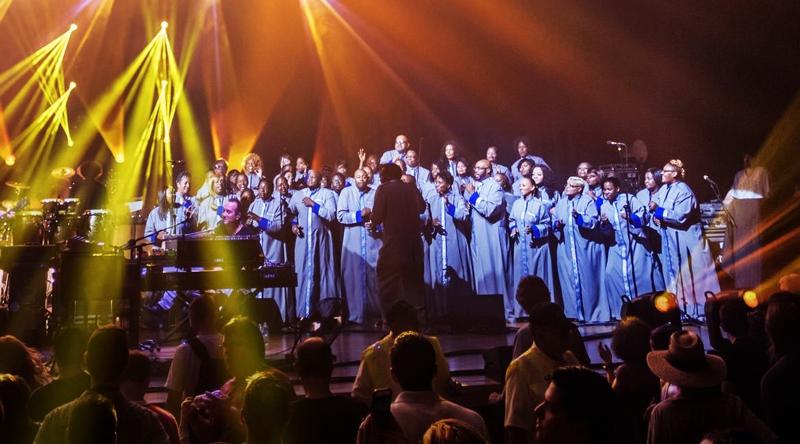 When mixing gospel music, you have to place all the tracks so that they are not masking each other or fighting. Otherwise, your mix will not make a beautiful song but rather sound like a huge pile of loud instruments and voices placed on top of each other.
When mixing gospel music, you have to place all the tracks so that they are not masking each other or fighting. Otherwise, your mix will not make a beautiful song but rather sound like a huge pile of loud instruments and voices placed on top of each other.
Let’s look at the mixing gospel music process step by step
Drums
Let’s start with drums.
 Apply saturation and cut the transients
Apply saturation and cut the transients
When mixing gospel music, apply a lot of saturation to your drum tracks to cut transients. Because here the drum sound is not mixed very close to the listener. So you can sacrifice some details in transients and dynamics to benefit from the increased loudness.
Sustain and tails are enhanced by the wide room the music is placed in. Therefore, mix the drums with the aim of sustain and tails, wideness, and a big, fat sound.
Use parallel compression to enhance the body of the drum sound
We can also use parallel compression to enhance the body of the drums even more without further harming their dynamics.
Again, make them big and fat, and with the wide-room sustain.
Bass
Bass should be compressed to almost a brick wall compression while mixing gospel music.
No harmonics on the bass!
Pay attention to keeping only the first harmonic, which is the fundamental frequency.
There is a difference between mixing bass for a gospel song and a rock song. Usually rock or pop bass gains a lot of harmonics from saturation, especially in the range from 100 Hz to 300 Hz. But here, mixing a loud gospel song, you can’t afford that because there will be a lot of other material in the upper bass and mid frequencies. You can’t place harmonics from your bass there.
You need a clear bass sound without saturation. The DI bass (direct input bass) sound here will be the best solution.
Use sidechain compression for bass and kick drum
Use sidechain compression for bass and kick, as you would usually do when mixing other songs. Place a compressor on the bass and route the kick drum to the sidechain input of the compressor.
This will create the space for a kick drum and place bass and kick peacefully together in the bass frequencies.
Accompaniment
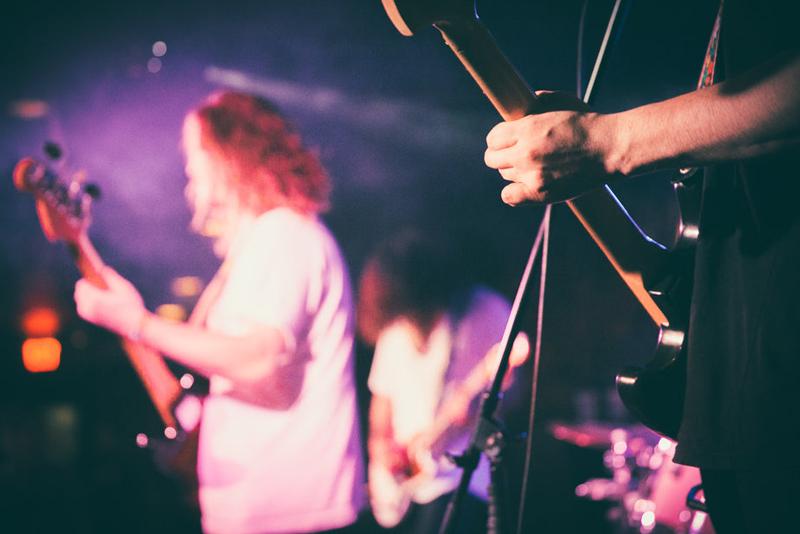 Usually, there are many keyboards, guitars, strings, and other instruments comprising the accompaniment.
Usually, there are many keyboards, guitars, strings, and other instruments comprising the accompaniment.
We need to make space for all the instruments in the mix so they won’t fight with each other. The first step to success here is to determine which instrument you’ll treat as the most important one.
Determine the leading instrument
First of all, we find the instrument that has the leading role. It can be the guitar, the piano, or another instrument. The main factor here is the leading presence of the instrument in the frequency spectrum and its importance in this composition.
Make space for the leading instrument in the accompaniment
For example, we see that the piano takes the lead in the accompaniment. Then all the other instruments will have to give up some of their frequency information when the piano sounds.
So, for example, if we have bells and the piano is leading and those bells are in conflict with the piano, we cut the bells’ frequencies that fight with the piano, leaving the bells’ harmonics in the higher frequencies.
So, we take the main instrument and adjust other instruments in the accompaniment so that they do not mask it.
Glue the accompaniment together with compression or saturation
After we have done this, we put a slight saturation or compression on the accompaniment bus to glue the accompaniment together and raise the loudness a bit more.
Lead vocals and choir
 Vocals are made very upfront and powerful when mixing gospel music.
Vocals are made very upfront and powerful when mixing gospel music.
Maximum compression on the vocals
When mixing gospel music, we treat lead vocals as we would a rock vocal. It must be overcompressed and made very upfront.
Apply big reverb
Also, we need to add a big reverb to the vocals and the choir; you may choose some hall reverb.
Apply sidechain EQ to the vocals and accompaniment
Lead vocals and the choir are the elements that you’ll have to put before all the instruments in the accompaniment for most genres, and when mixing gospel music, you’ll do the same.
For this purpose, you may now sidechain EQ the vocals and the accompaniment. Use dynamic EQ, for example, DSEQ, Soothe2, or any other one you like. Place the EQ at the accompaniment bus and route vocals to the sidechain input.
Using the sidechain EQ, we attenuate the information of the accompaniment according to the vocals’ frequencies and when the vocals appear. Now, when the choir sings, or when the lead vocalist sings, the frequencies they take up are cleared up in the accompaniment.
Want a free test mix of your track?
We get it.
That’s why we’ll do a full hybrid (analog + digital) mix of your song —
for free.
No upfront payment. No risk.
You only pay if you’re blown away. And if you are, we’ll slash 40% off the final price.
Nobody else in mixing and mastering offers this.
Why?
Because most studios say yes to every project. We don’t. We only mix what we’re excited about — so send us your best track. If we like it, we’ll mix it like it’s going to the Grammys.
👉 Just drop your name and email to get started.
Mix your gospel songs with us
Mixing gospel music can very well be exhausting for you if you are not a professional mix engineer.
An overwhelming number of tracks, an overloaded mixing session, and a lot of elements sharing the same frequency bands can make you waste many hours and make your projects seem impossible to mix.
We have professionally mixed hundreds of loud and overloaded projects, including gospel songs. We know the peculiarities of the recording process and can do high-quality mixing and mastering of such recordings.
Let us help you with your gospel project production. Contact us now, we are here to help you grow.

